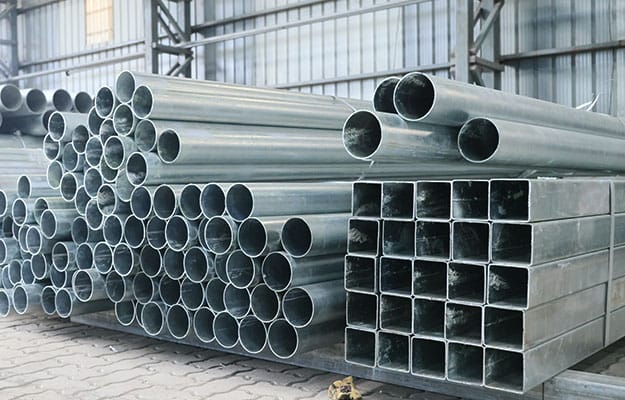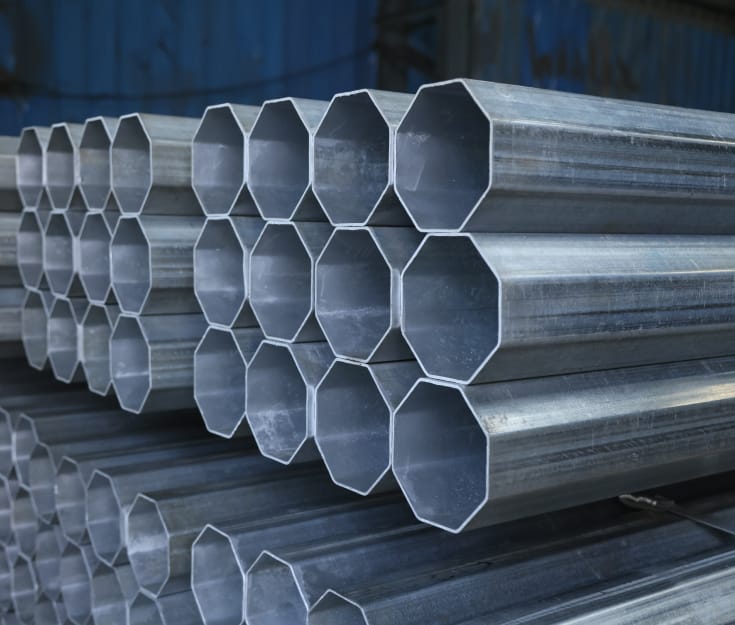In the construction and upkeep of buildings, knowing how long galvanised pipes last is critical. These pipes, coated in zinc for protection, have been the mainstay of plumbing for many a year, warding off rust and decay. But as buildings age, so do these pipes, prompting queries on their longevity. This piece illuminates the lifespan of galvanised pipes, offering a clear path for identifying when a swap is due. By spotting signs of wear early and acting swiftly, the safety and efficiency of your plumbing can be preserved, making the knowledge of galvanised pipe life expectancy crucial for modern-day builders, contractors and any GI pipe supplier.
Understanding Galvanised Pipe Life and Its Protection Mechanism
For years, galvanised steel plumbing has been a fundamental part of construction, mainly used for bringing fresh water into homes. The galvanization process, which coats steel or iron pipes with zinc, shields the steel from corrosion and rust.
When zinc meets oxygen, it forms zinc oxide, a layer that oxidises slower than iron. This layer is vital for the pipe's longevity. The eventual wear of the zinc coat, leading to steel exposure, is a critical point to consider, particularly for those in home construction and maintenance.
Galvanised Pipe Life Expectancy
When pondering the durability and lifespan of galvanised pipes, understanding their expected service life is essential. Initially, these pipes were thought to last 50 to 70 years under ideal conditions. However, reality shows many start to rust in less than 25 years, with most showing wear after 40 years. Despite its initial resistance to corrosion, galvanised steel often does not reach its expected lifespan, especially in applications like fire sprinkler systems where the constant moisture prevents the formation of a protective zinc carbonate layer, leading to quickly localised oxygen corrosion.

Signs of Problems with Your Pipes
Spotting issues with your galvanised pipes early is vital for keeping your plumbing system in check. Look out for these signs indicating they are nearing their end or already failing
- Reduced water pressure
- Discoloured water
- Leakages
- Visible rust on pipe surfaces
Key Factors Influencing Galvanised Pipe Life Expectancy
Grasping the lifespan of galvanised pipes is critical. Here are the main factors affecting their life expectancy
- Zinc coat quality and thickness
- Underlying steel quality and thickness
- Installation methods of galvanised pipes
- Water pH level flowing through the pipes
- Hot water lines are more prone to corrosion
- Pipes in damp settings
Also Read: Essential Strategies in Maintenance of Galvanised Pipes
Identifying Signs of Corrosion in Galvanised Pipes
Spotting corrosion in your galvanised pipes early is critical to maintaining your plumbing integrity.
Visual signs include noticeable rust on pipes and water quality or flow changes. If the water looks discoloured or tastes metallic, the pipe's interiors are likely corroding. Similarly, a drop in water pressure could mean rust and scale, which hinders movement inside the pipes.
Implementing Knowledge for Longevity
Knowing the life expectancy of galvanised pipes is fundamental to quality construction and maintenance. By spotting corrosion and wearing signs early, you are leading the way in preventive care, ensuring the longevity and reliability of the plumbing in your projects. It is about identifying when to replace galvanised pipes and choosing suitable materials from the start. Steel pipe manufacturers in Tamil Nadu can provide invaluable guidance in this process.

